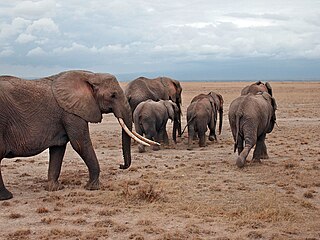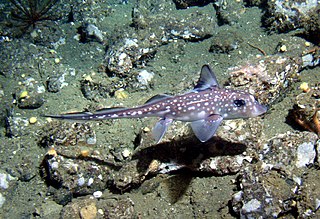| Abraeus | |
|---|---|
 | |
| Abraeus granulum | |
| Scientific classification | |
| Kingdom: | Animalia |
| Phylum: | Arthropoda |
| Class: | Insecta |
| Order: | Coleoptera |
| Family: | Histeridae |
| Subfamily: | Abraeinae |
| Genus: | Abraeus Leach, 1817 |
| Species | |
See text. | |
Abraeus is a genus of hister beetles.
| Abraeus | |
|---|---|
 | |
| Abraeus granulum | |
| Scientific classification | |
| Kingdom: | Animalia |
| Phylum: | Arthropoda |
| Class: | Insecta |
| Order: | Coleoptera |
| Family: | Histeridae |
| Subfamily: | Abraeinae |
| Genus: | Abraeus Leach, 1817 |
| Species | |
See text. | |
Abraeus is a genus of hister beetles.
Abraeus bolteri is a species of clown beetle in the family Histeridae. It is found in North America.
| This Polyphaga-related article is a stub. You can help Wikipedia by expanding it. |
A genus is a taxonomic rank used in the biological classification of living and fossil organisms, as well as viruses, in biology. In the hierarchy of biological classification, genus comes above species and below family. In binomial nomenclature, the genus name forms the first part of the binomial species name for each species within the genus.

In biology, a taxon is a group of one or more populations of an organism or organisms seen by taxonomists to form a unit. Although neither is required, a taxon is usually known by a particular name and given a particular ranking, especially if and when it is accepted or becomes established. It is not uncommon, however, for taxonomists to remain at odds over what belongs to a taxon and the criteria used for inclusion. If a taxon is given a formal scientific name, its use is then governed by one of the nomenclature codes specifying which scientific name is correct for a particular grouping.

In biology, a monotypic taxon is a taxonomic group (taxon) that contains only one immediately subordinate taxon.

In zoological nomenclature, a type species is the species name with which the name of a genus or subgenus is considered to be permanently taxonomically associated, i.e., the species that contains the biological type specimen(s). A similar concept is used for suprageneric groups called a type genus.

In biology, a type is a particular specimen of an organism to which the scientific name of that organism is formally attached. In other words, a type is an example that serves to anchor or centralize the defining features of that particular taxon. In older usage, a type was a taxon rather than a specimen.

The subclass Holocephali is a taxon of cartilaginous fish in the class Chondrichthyes. The earliest fossils are of teeth and come from the Devonian period. Little is known about these primitive forms, and the only surviving group in the subclass is the order Chimaeriformes. This group includes the rat fishes in the genus Chimaera, and the elephant fishes in the genus Callorhynchus. These fishes move by using sweeping movements of their large pectoral fins. They have long slender tails and live close to the seabed feeding on benthic invertebrates. They lack a stomach, food moving directly into the intestine.
The abbreviation cf. is used in writing to refer the reader to other material to make a comparison with the topic being discussed. It is used to form a contrast, for example: "Abbott (2010) found supportive results in her memory experiment, unlike those of previous work ." It is recommended that "cf." be used only to suggest a comparison, and the word "see" be used to point to a source of information.

A botanical name is a formal scientific name conforming to the International Code of Nomenclature for algae, fungi, and plants (ICN) and, if it concerns a plant cultigen, the additional cultivar or Group epithets must conform to the International Code of Nomenclature for Cultivated Plants (ICNCP). The code of nomenclature covers "all organisms traditionally treated as algae, fungi, or plants, whether fossil or non-fossil, including blue-green algae (Cyanobacteria), chytrids, oomycetes, slime moulds and photosynthetic protists with their taxonomically related non-photosynthetic groups ."
In botanical nomenclature, author citation refers to citing the person or group of people who validly published a botanical name, i.e. who first published the name while fulfilling the formal requirements as specified by the International Code of Nomenclature for algae, fungi, and plants (ICN). In cases where a species is no longer in its original generic placement, both the author(s) of the original genus placement and those of the new combination are given.
In biology, a homonym is a name for a taxon that is identical in spelling to another such name, that belongs to a different taxon.
In taxonomy, a segregate, or a segregate taxon is created when a taxon is split off from another taxon. This other taxon will be better known, usually bigger, and will continue to exist, even after the segregate taxon has been split off. A segregate will be either new or ephemeral: there is a tendency for taxonomists to disagree on segregates, and later workers often reunite a segregate with the 'mother' taxon.
In botanical nomenclature, autonyms are automatically created names, as regulated by the International Code of Nomenclature for algae, fungi, and plants that are created for certain subdivisions of genera and species, those that include the type of the genus or species. An autonym might not be mentioned in the publication that creates it as a side-effect. Autonyms "repeat unaltered" the genus name or species epithet of the taxon being subdivided, and no other name for that same subdivision is validly published. For example, Rubus subgenus Eubatus is not validly published, and the subgenus is known as Rubus subgen. Rubus.
In scientific nomenclature, a synonym is a scientific name that applies to a taxon that (now) goes by a different scientific name, although the term is used somewhat differently in the zoological code of nomenclature. For example, Linnaeus was the first to give a scientific name to the Norway spruce, which he called Pinus abies. This name is no longer in use: it is now a synonym of the current scientific name, Picea abies.

In taxonomy, an undescribed taxon is a taxon that has been discovered, but not yet formally described and named. The various Nomenclature Codes specify the requirements for a new taxon to be validly described and named. Until such a description has been published, the taxon has no formal or official name, although a temporary, informal name is often used. A published scientific name may not fulfil the requirements of the Codes for various reasons. For example, if the taxon was not adequately described, its name is called a nomen nudum. It is possible for a taxon to be "undescribed" for an extensive period of time, even if unofficial descriptions are published.

In biological classification, taxonomic rank is the relative level of a group of organisms in a taxonomic hierarchy. Examples of taxonomic ranks are species, genus, family, order, class, phylum, kingdom, domain, etc.
Combinatio nova, abbreviated comb. nov., is Latin for "new combination". It is used in life sciences literature when a new name is introduced based on a pre-existing name. The term should not to be confused with species nova, used for a previously unnamed species.
Trionyx is a genus of softshell turtles belonging to the family Trionychidae. In the past many species in the family were classified in this genus, but today T. triunguis, the African or Nile softshell turtle, is the only extant softshell still classified as Trionyx. The other species still assigned to this genus are only known from fossils. T. triunguis is a relatively large, aquatic piscivore.
Abraeus loebli is a beetle discovered by and Yves Gomy och Ôhara in 2001. No sub-species listed in Catalogue of Life.
Abraeus brunneus is a beetle discovered by Thomas Broun in 1881. No sub-species named in Catalogue of Life.